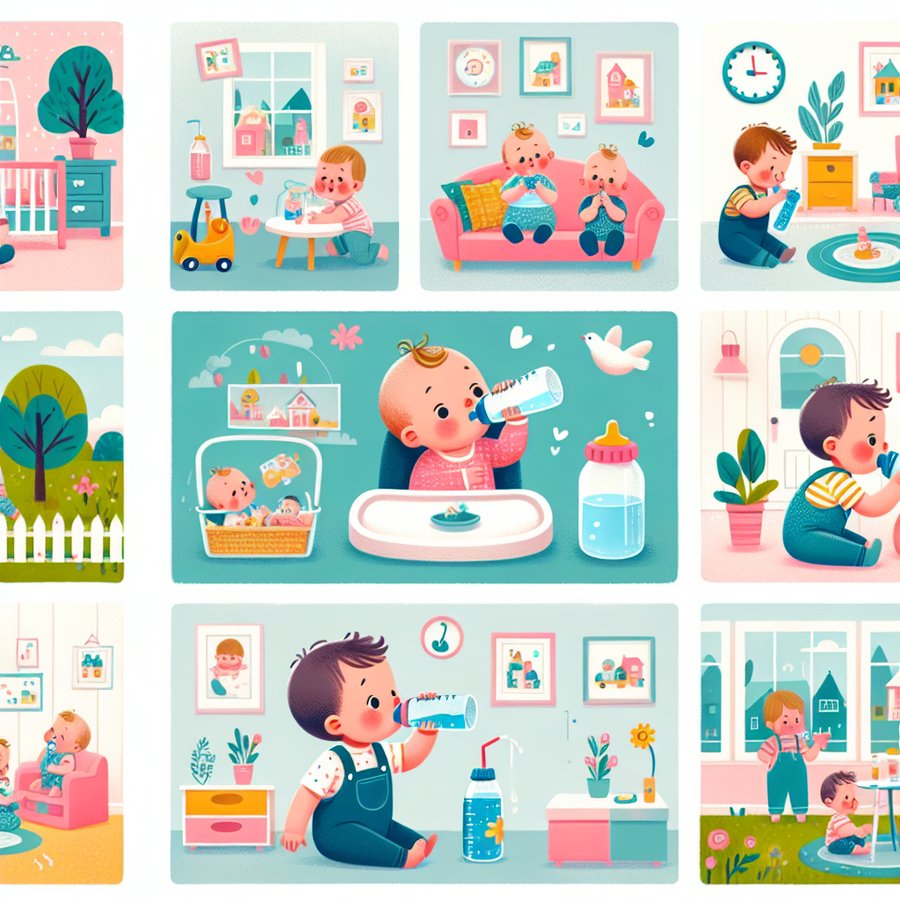How much water should a 6-month-old drink daily is a question that often bubbles up in the minds of new parents as they navigate the transition to solid foods and seek to maintain optimal hydration for their baby’s health and development. As simple as it sounds, the answer involves understanding your baby’s changing dietary needs and ensuring they receive just the right amount of water alongside breast milk or formula.
The Importance of Proper Hydration for 6-Month-Olds
Proper hydration is essential for everyone, including infants. Around the 6-month mark, babies begin to explore solid foods, which changes their hydration needs. While breast milk or formula should still be the primary source of nutrition and hydration, introducing a small amount of water can help facilitate the transition to solid foods and support the overall digestive process.
However, it’s important to strike the right balance. Excessive water consumption in infants can lead to water intoxication, which dilutes the level of sodium in the body, creating a potentially dangerous situation. Therefore, knowing the recommended amount of water for a 6-month-old is crucial for their safety and well-being.
How Much Water Should a 6-Month-Old Drink Daily?
According to pediatric health guidelines, a 6-month-old baby may be offered a small amount of water—about 2 to 4 ounces (60 to 120 milliliters) a day, divided into two offerings. This is in addition to their regular feedings of breast milk or formula. This modest amount is sufficient to satisfy their hydration needs without interfering with their primary nutrition sources.
It’s best to introduce water during or after meal times to help digest solid foods, using a sippy cup or a cup with a straw. This method not only aids in hydration but also helps the baby in developing new drinking skills. For more detailed guidance, consulting with a pediatrician is always recommended, especially if your baby has specific health considerations.
Integrating Water Into Your Baby’s Diet Safely
As you begin to introduce water, there are several best practices to follow to ensure it’s done safely and effectively. Always use clean, safe-to-drink water. For many, this may mean boiled and cooled water, particularly in areas where water quality is a concern.
Start by offering water in a sippy cup after solids. This not only meets their hydration needs but also gets them used to different drinking vessels. Observe your baby for signs of readiness and interest, and don’t force it if they seem disinterested or fussy. Patience is key in this learning phase.
Additional Information for Parents
Every baby is unique, and while the general guidelines provide a starting point, your baby’s needs might slightly differ. Signs of adequate hydration include regular urination (clear or light yellow urine) and a happy, active demeanor. On the other hand, signs of dehydration may include fewer wet diapers, dark yellow urine, or lethargy. If you notice any of these signs, increase fluid intake and consult your pediatrician.
Introducing water is just one aspect of your baby’s dietary changes at this age. For parents navigating the introduction of solid foods, understanding how to introduce solid foods or managing bottle refusal can also be important. Moreover, as your baby grows, their water needs will change. For insights into how much water a 2-year-old should drink daily, our guides can help navigate these shifts.
Remember, the journey of introducing water and solid foods is a gradual one. Patience, observation, and consultation with healthcare providers will ensure your baby stays healthy and happy on this new dietary adventure. For more information on infant hydration and nutrition, the Centers for Disease Control and Prevention (CDC) offers a comprehensive resource.













